A near fight on House floor, other dramatic moments caught on camera in McCarthy speaker saga

WASHINGTON – The absence of rules at the start of the new Congress allowed rare, cinematic coverage of last week's House debate on who should be the next speaker.
During the four-day saga, video cameras panned the chamber and focusing on lawmakers in areas not often seen on television screens. Still photographers had the leeway to find new angles to dramatize the action. Lawmakers were seen huddling in negotiation, racing to cast a vote or just sitting and reading.
The more flexible access allowed cameras to capture rare images of lawmakers shouting at each other on the floor, huddling amid the contentious debate or racing to the floor to vote as the drama plays out. In one astonishing image, Rep. Mike Rogers, R-Ala., is seen being physically restrained by another lawmaker after getting into an argument with Rep. Matt Gaetz, R-Fla.
Cameras also caught quieter moments of a lawmaker yawning over the debate, holding a baby or just sitting and reading a book.
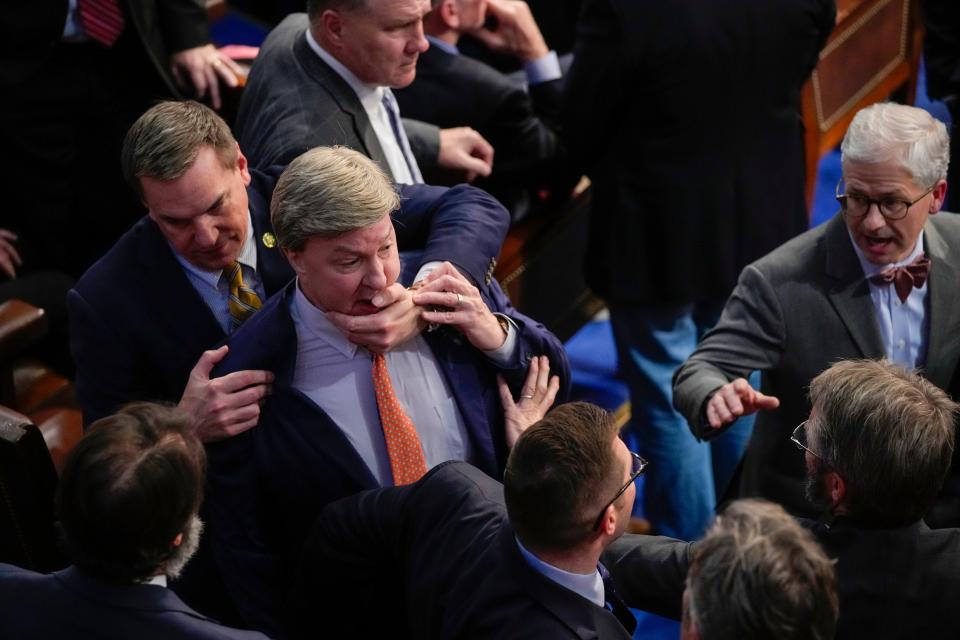
Why did cameras get a wider view of the House fight?
The public got a wider view of the saga on Capitol Hill because the House had yet to set rules for the new session in the absence of a speaker. At the start of each new session, the House must reconstitute itself with incoming members and adopt new rules – a process that can't begin until a speaker is chosen.
The 117th Congress adjourned Tuesday morning and the 118th Congress waits to be sworn in. But before that can happen, the chamber needs to elect a speaker and adopt its organizing rules. For lack of a speaker, the lack of rules means that commonplace restrictions are temporarily not in place.
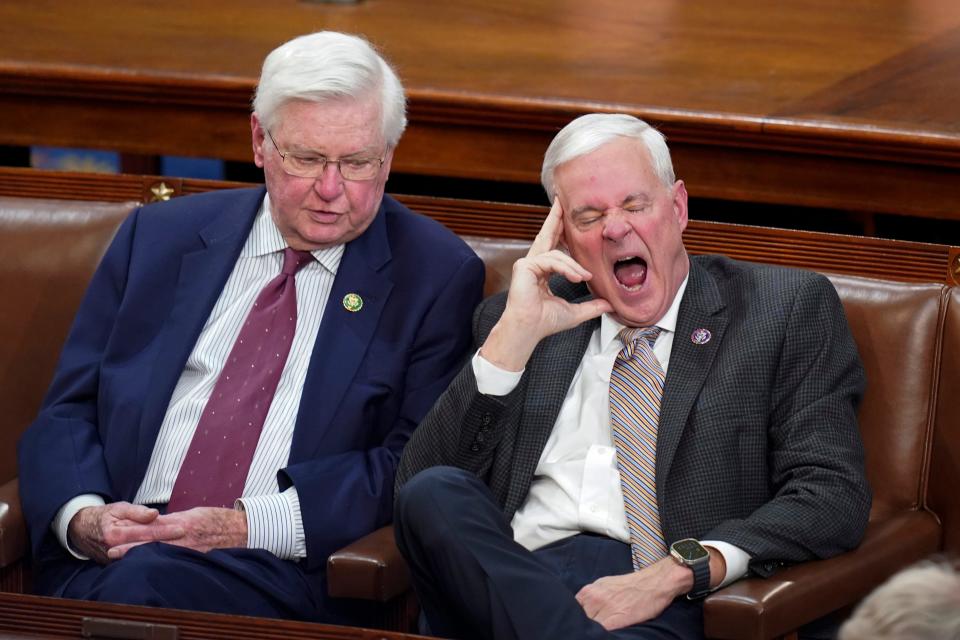
The lack of rules literally opened the doors of the House chamber to cameras – both video and still – that are typically restricted by what they can show. The new perspective reveals panoramic views of lawmakers in their seats listening to debate.

Keeping a birds-eye perspective on the entire field of lawmakers allows the chance to capture a gesture such as Rep.-elect Ilhan Omar, D-Minn., giving a thumbs down to adjourning on Thursday.

For video, the House traditionally controls cameras that remain fixed on the speaker’s rostrum or on the floor lecterns where lawmakers of each party debate legislation. The cameras can’t pan the audience to see how many lawmakers are listening to a debate. During a vote, House cameras allow a wide angle of the chamber from the side.
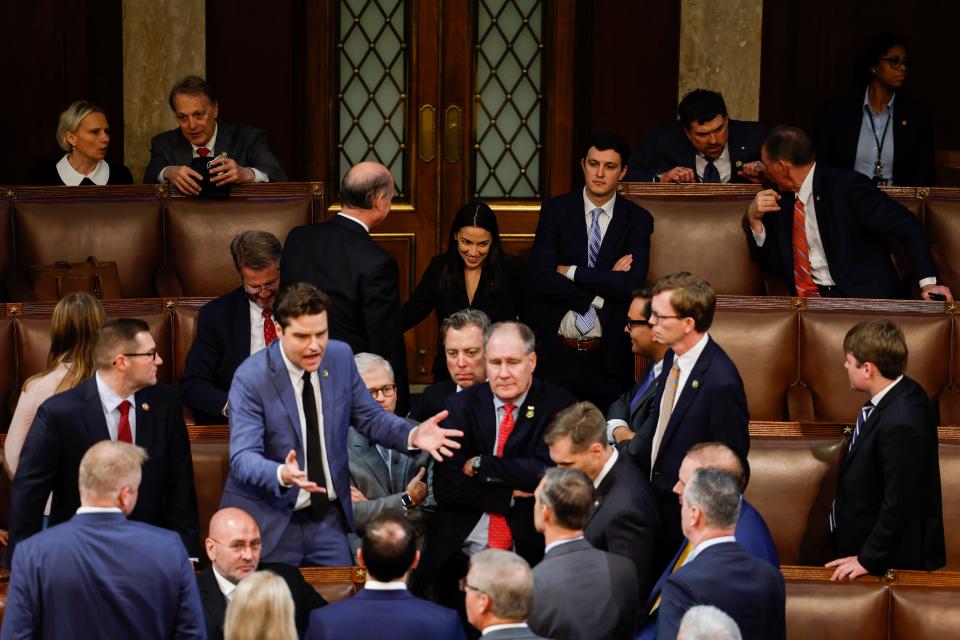
In the absence of rules, news organizations including C-SPAN, which typically broadcasts the official House feed, brought their own cameras onto the balconies above the floor. The additional cameras offered panoramic views of who was present. The new views also offered the opportunity to focus tightly on two lawmakers speaking with each other away from the spotlight.
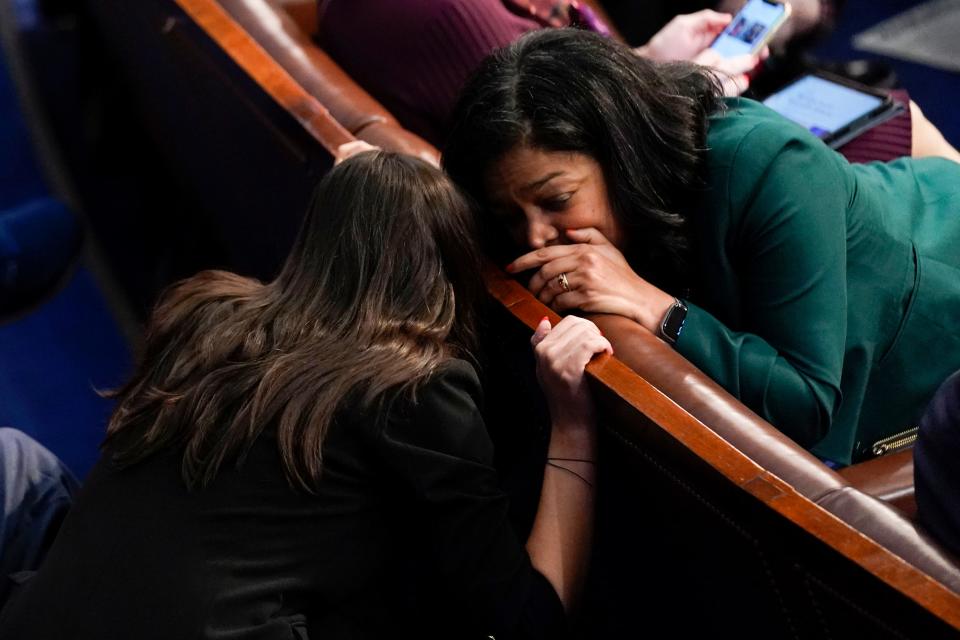
Likewise, still photographers who are typically limited to where they can stand and when they can shoot found new angles to portray. Reporters and broadcast producers were allowed into balconies above the floor debate, where they can see whispered conversations or catch a lawmaker yelling at the president during a speech. But cameras often portray a dramatic moment more emphatically than mere words.
This rare camera access showed Rep. Kevin McCarthy, R-Calif., sitting and waiting for the results of the latest vote.
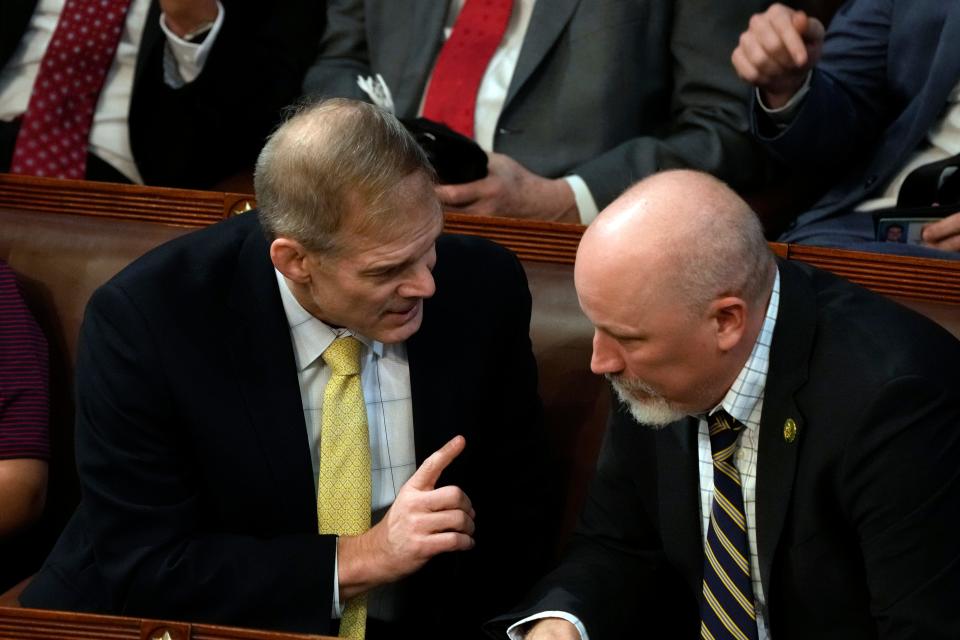
Reps. Jim Jordan, R-Ohio, and Chip Roy, R-Texas, huddled away from the spotlight; or someone sitting and reading a book, like Rep. Jerry Nadler, D-N.Y.
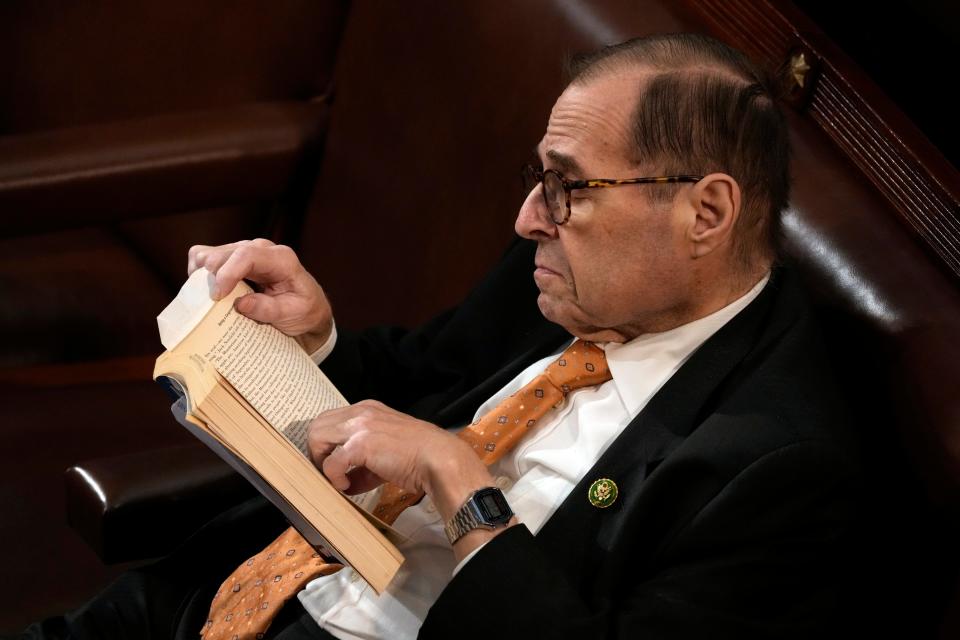
Lawmakers often bring children onto the House floor for the celebratory first day of a new Congress. As the relaxed atmosphere continues for days during the speaker debate, Rep.-elect Alexandria Ocasio-Cortez, D-N.Y., lifted a baby into the air.
Here are some videos that would not be allowed under traditional House rules:
New member George Santos temporarily misses roll call vote
Lawmakers typically vote with electronic cards that are tabulated on a video scoreboard above the speaker’s desk. It’s often tough to spot a specific lawmaker in the room. But in voting for speaker, each representative-elect’s name is called and the person stands to announce who they support.
A video camera caught Rep.-elect George Santos, R-N.Y., failing to respond during one roll call until after the clerk had moved to the next name on the alphabetical list. He eventually raised his hand and wasn’t recognized. But he was later able to record his vote.
Dan Crenshaw says of McCarthy holdouts: 'They are enemies now.'
Television cameras are typically prohibited from roaming the Capitol. This is especially true on the second floor, where the House and Senate chambers are located, and on the third floor, where offices for lawmakers and committees are located.
While catching a lawmaker on video in the hallway of a congressional office building is commonplace, the lack of rules allowed a rare Capitol hallway interview with Rep.-elect Dan Crenshaw, R-Texas. Crenshaw expressed exasperation with GOP rebels who refused to back McCarthy, saying: "They are enemies now."
Kat Cammack provokes reaction from Democrats during floor debate
House rules traditionally prohibit criticizing another member by name or questioning an opponent’s motives. Insults can lead to disciplinary proceedings. The clerk who presided over the organization of the House, Cheryl Johnson, opened Thursday’s session reminding representatives-elect to address their remarks to the chair and to refrain from remarks about personalities.
“The clerk has the responsibility to preserve order and decorum in the chamber prior to the election of the speaker,” Johnson said before receiving lengthy applause.
The reminder came after Rep.-elect Kat Cammack, R-Fla., said on the House floor Wednesday that Democrats enjoyed seeing Republicans divided.
“That much has been made clear by the popcorn and blankets and alcohol that has come out over there,” Cammack said to shouts of protest.
This article originally appeared on USA TODAY: Kevin McCarthy House speaker fight: Dramatic moments caught on camera
Solve the daily Crossword

